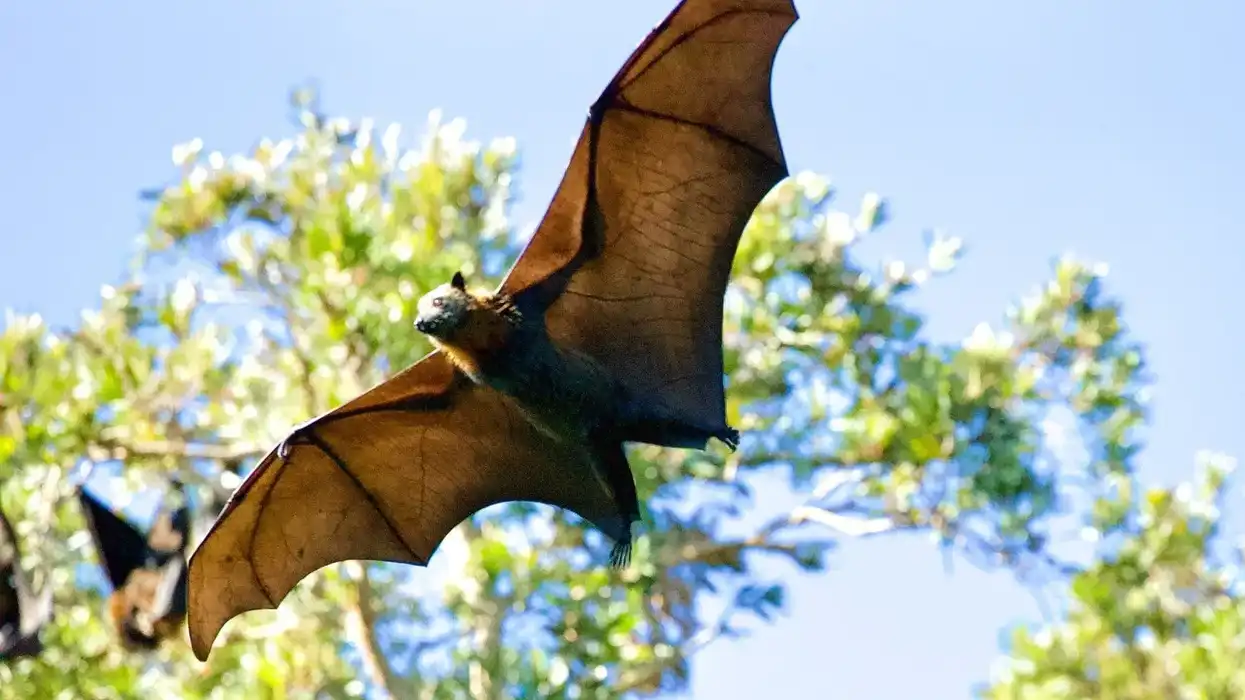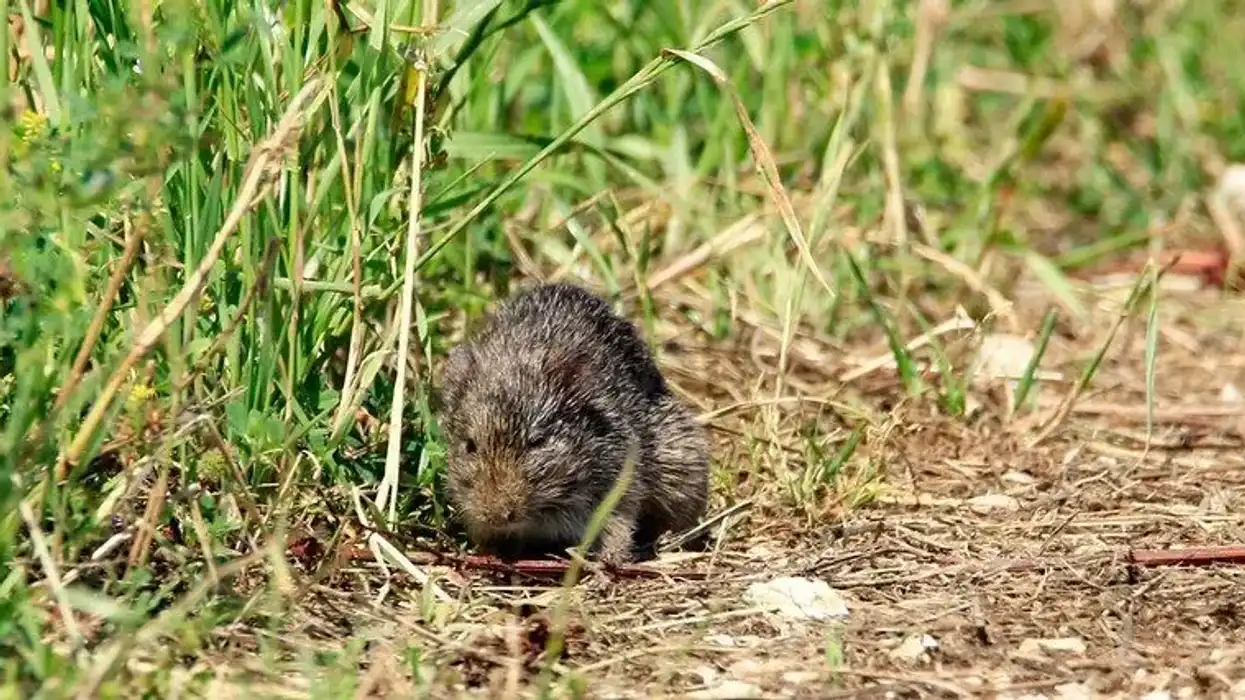Rats or mice can be really annoying in communities. Mice infest areas and grow in numbers like anything and make their own nest anywhere they desire.
This mouse species is extremely smart and nocturnal. A mouse grows really big in size.
Dusky footed woodrat (Neotoma fuscipes) are hosts to a variety of deadly pathogens that cause life-threatening diseases in humans, such as hantavirus, rabies, and more.
With the increase in industrialization, the increase in urban areas and human settlements led to the cutting down of grasslands and burrow holes that were homes to predators like snakes that would feed on these nuisance pests in their nests.
A decrease in their predators led to a disruption of the normal food chain and hence an increase in the population of Dusky Footed Woodrat (Neotoma fuscipes).
One such mouse or rodent we will be discussing in this fact file is a dusky-footed woodrat, also known as a trade rat mouse found in Mexico and the United States. Scientifically, this member of the mouse species is known as Neotoma fuscipes.
Here are some of the most interesting facts about the dusky-footed woodrat. Afterward, do check our other articles on aurochs facts and takin facts as well.
Dusky-Footed Woodrat Interesting Facts
What type of animal is a dusky-footed woodrat?
The dusky footed woodrat (Neotoma fuscipes) is a rodent that dwells in the wilderness of the deserts and juniper and coniferous forests of the Northern American Continent. These rats or mice are large-sized rodents and have a bulky and stout appearance.
What class of animal does a dusky-footed woodrat belong to?
A dusky-footed woodrat or mouse belongs to the class Mammalia of phylum Chordata in kingdom Animalia. A mouse further belongs to the Cricetidae family, which contains rodents, mice, voles, and true hamsters and the order Rodentia.
How many dusky-footed woodrats are there in the world?
This dusky footed rodent/mouse species is widely spread in the deserts and forests in North America. There is no proper count of the population of the mouse, but according to the reports, it is stable for now. Their nests can be present around inaccessible places like poison oak patches or thorny bushes and trees.
Where does a dusky-footed woodrat live?
Dusky-footed woodrat (Neotoma fuscipes) is a mouse that is found in North America and Mexico. Here this mouse species can be found in Oregano, in Baja California.
Their population is widespread in deserts along the Pacific Coast and the Great Basin. A mouse prefers forests such as juniper forest and coniferous forest and prefers densely covered grounds with lots of trees. The woodrat houses are in the form of a dome-shaped stick house located in chaparral or coastal sage scrub.
In northeastern California, these woodrats are able to nest in lava rims and beds if adequate herbivorous vegetation cover is provided for the house along with thick-leaved trees. They prefer a consistent habitat for their food cuttings storage requirements.
What is a dusky-footed woodrat's habitat?
Dusky-footed woodrats mouse species lives close to hillsides and valleys that are situated near water streams, coniferous forest, and water bodies as they are known as nesting woodrats. Typically, a mouse prefers covered areas with plant population Arroyo willow or live oak for protection.
These species are nocturnal and avoid areas that even have moonlight showing it.
Also, a mouse prefers cold and less humid weather to build their stick houses/nest in. Their nests are present in the form of a stick house and are prepared from shredded grass, and California bay laurel leaves along dense vegetation or rock cover.
Who do dusky-footed woodrats live with?
Woodland rat species or a mouse, in general, live in groups in a place known as woodrat dens or an empty den. In a suitable habitat range, 3 - 15 rats build their nests together. This way, woodrats make small colonies or nests using ground cover where they live, forage and breed together.
How long does a dusky-footed woodrat live?
A dusky-footed woodrat mouse species lives in the wild in satellite dens. These species are always under a threat of being attacked by predators such as snakes and raptors.
This is one reason that these species have a comparatively shorter life span. They live for around two to three years or even less if they are attacked by a predator.
How do they reproduce?
Male woodrats or mouse species living in solitary reaches sexual maturity a lot earlier than the ones that live in groups as their mating system is designed in such a way. Female woodrats reproductive period begins from September and lasts till June-July mid.
This is because the arrival of monsoon season is soon after, which brings a lot of vegetation and food to feed the young ones. The female species are monogamous, and after mating, they give birth to two to four young ones on average.
What is their conservation status?
These woodrats species have stable population densities, and hence their family falls in the Least Concern category of species according to the IUCN Red List. Hence, habitat generalists say that the woodrat populations are not endangered and do not required protection schemes.
Dusky-Footed Woodrat Fun Facts
What do dusky-footed woodrats look like?
These woodrats or packrats rodents mouse have cinnamon-colored fur for exoskeleton with a hint of pink and buff in some rats with small body length. This helps them in camouflaging with the ground. Females have whiskers that are present in rows that are evenly spaced and are parallel.
Females also have large ears that are round, broad, and covered in hair. Females have colorless claws that are short and sharp but are even. Males are usually larger and heavier in size than the female.
How cute are they?
They are generally cute in appearance, mostly because of their fur color and round ears. But it totally depends on the perception of a spectator whether they would find rats cute or not.
How do they communicate?
A dusky-footed woodrat mouse is sharp, alert, and intelligent, just like any other rodent. They are able to pick up vibrations very quickly. They pull their ears back when they are annoyed or angry. Male rats, apart from this, fight a lot where they sneer and bite each other.
How big is a dusky-footed woodrat?
A dusky-footed woodrat is quite big in size. A male is always bigger than a female rat. A female rat may range around 13.5 in (35 cm) in length, including its tail which is comparatively longer than the body. The male may range around 17.44 in (44.3 cm) in length.
How fast can a dusky-footed woodrat run?
The dusky-footed woodrat is a fast mammal. They are sharp, alert, and run very fast. Woodrats can achieve a top speed range of 8 mph (12.8 kph).
How much does a dusky-footed woodrat weigh?
A dusky-footed woodrat is a heavy rodent. An average adult rodent can weigh somewhere around 0.55 lb (0.210 kg). The male rodent is usually heavier than a female rodent.
What are the male and female names of the species?
A male and a female dusky foot do have separate names.
What would you call a baby dusky-footed woodrat?
A baby mouse is referred to as a pinky. The babies of this species are usually born without any fur for the exoskeleton.
What do they eat?
Their diets or food source consist of around 72 different types of plant matter and leaves. Blackberry, flea larvae, maul oak, soap plant, sticks, valley oak, leaves, and bracken, to name some.
They eat a lot of food, especially at night time. These plants and leaves species provide a good amount of nutrients and water content to these rodents. Footed wood rats also feed on rotten or fresh fruits.
When it comes to predators, woodrats often fall prey to hawks, owls, coyotes, and weasels.
Are they poisonous?
They are not poisonous as they feed on leaves only. They may bite or harm by scratching, which can be problematic. This is because they may be hosts to a variety of deadly pathogens that may lead to life-threatening diseases in human beings.
Would they make a good pet?
A pet enthusiast may keep them well. But they are wild animals and feed on plants, unlike urban rodents; thus, in my opinion, they might not make good pets. This is mostly because they may get violent if they get the scent of incense cedar very easily and are high maintenance.
Did you know...
These rats are said to have some economic importance. Their feces in coastal areas of California are used as fertilizers for gardening. Hence they are commercially important.
Other mice species can be found living in the abandoned houses of the dusky-footed woodrat.
Are dusky-footed woodrats endangered?
Their population is stable, and they fall in the Least Concern species category. But there are several threats imposed on them, such as clearing of forest ground for urbanization and industrial activities and loss of habitat that might put them in danger.
How did the dusky-footed woodrat get its name?
They got their name because of the sooty gray appearance of their feet. Their light-colored feed and their habitat, which is woods got them their name.
Here at Kidadl, we have carefully created lots of interesting family-friendly animal facts for everyone to discover! For more relatable content, check out these naked mole rat facts and African elephants facts pages.
You can even occupy yourself at home by coloring in one of our free printable dusky-footed woodrat coloring pages.










